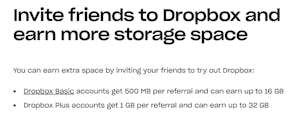You could develop and release the best app in the world. But if you’re not promoting and marketing your app to boost awareness, you’re shooting yourself in the foot.
Mobile acquisition is an integral part of managing a mobile app. Without any users, you don’t have an app, so driving new users is essential for growth and maximizing revenue.
However, a trap that you don’t want to fall into as you set your mobile user acquisition strategy is to try to attract the most users possible. You want to focus on attracting the right kind of users, as in the type of loyal users that are most likely to stick around and not quit your app the next day.
Here are the top four user acquisition tactics you can choose to boost awareness around your app:
1. Get Active on Mobile Ad Networks
Mobile ad networks allow you to run ads within other apps. These networks present the opportunity to leverage another popular app’s user base for promoting your app and acquiring new users.
For example, let’s say you have an app that helps with creative design, like Canva. You can promote your app through an ad in another app that’s relevant to your product, such as a photo-editing app.
Examples of mobile ad networks you can choose to set up these ads include:
- AdColony: AdColony is one of the most-trusted mobile ad networks and has a reach of over 1.5 billion users. Its team will design your in-app ads and provide transparent reporting on how ads are performing.
- AppLovin: With AppLovin’s AppDiscovery feature, you can promote your mobile app in front of new audiences. Through its analytics dashboard, you can break down the results of your campaigns based on different factors, such as location and source. Like AdColony, you also get access to a creative team that helps you design the best in-app ads.
- Unity Ads: If you’re managing a mobile app game, then Unity Ads is for you. To help you acquire new users, Unity Ads offers mobile app marketers a choice of countless games where they can set up their in-app ads.
By choosing the right apps to run ads and market your own product, you’ll be able to drive high-quality traffic and new users to your mobile app.
2. Tap Into Influencer Marketing
With influencer marketing, you can promote your mobile app to a new audience and boost awareness to drive new installs. Influencer posts are also content that users find trustworthy: 61% of consumers reported trusting recommendations from influencers on social media as much as advice from their own friends.
One social platform that is becoming increasingly important for influencer marketing is TikTok. Chy Seng, mobile marketing manager for grammar-checking tool Grammarly, says in an interview with Forbes: “We found early success on TikTok through its influencer network, particularly as it relates to engagement with our ad creative.”
For example, one TikTok video from Ari Pine (a Grammarly-sponsored influencer) helped increase Grammarly’s awareness by 481%. The TikToker made a choreography based on audio from Grammarly’s YouTube ad, which created a trend of over 100,000 new videos on the platform.
The fonts app Fontmaker also experienced unexpected success with TikTok when it started trending on the social media platform thanks to influencers and became the number one app on the US App Store back in August 2021. According to Sarah Perez in a Techcrunch article: “[Fontmaker is] an example of how mobile marketers have figured out how to tap into the influencer community to drive app installs.”
Here’s how to manage an influencer marketing campaign in three steps:
Determine Your Influencer Budget
To get started using influencer marketing for your mobile app, you first need to define your budget. How much you’ll be spending during your influencer marketing campaign will depend significantly on how famous the influencer you want to collaborate with is.
For example, collaborating with a nano-influencer (an account with 1K–10K followers) could cost you around $50–$100 per post. Working with an influencer with over one million followers, on the other hand, could cost you up to $10K per post.
Identify the Platform Your Audience Is On
Next, based on your buyer persona, you need to choose social platforms where your audience is most active. For example, over 84% of influencers creating sponsored posts on Instagram are women. So, if your audience is female, then Instagram will be the best option for your influencer marketing campaign.
Examine the Influencer’s Follower/Engagement Ratio
Something important you can’t overlook as you choose an influencer to work with is their follower/engagement ratio. Even with strong followings, there are many reports of influencers using bots to fake their engagement. According to Hootsuite, a good follower and engagement ratio is around 1% to 5%.
3. Implement a Referral Program
A referral program gives current users an incentive to spread the word about your app. How? By telling their friends about the app in exchange for rewards. Those friends can then sign up and promote your app to others as well, which in turn boosts your mobile acquisition.
When Airbnb launched its referral program for the first time, the company allowed users to offer $25 to any friend they invited to the platform. The new referral program drove 900% year-on-year growth for first-time bookings, while new signups increased to 300%.
Another excellent example of using a referral program to acquire new users is Dropbox. As part of its referral program, Dropbox users can invite friends to the platform in exchange for free storage space:

To set up your referral program for your mobile app and acquire more users, identify which reward you want to use to get users to spread the word. Common rewards include cash (for example: “Give $10 and receive $10”) or discounts on users’ memberships.
Next, to maximize the success of your referral program, it needs to be easy to share. You must provide users with multiple sharing options for your referral program, such as SMS and a referral link.
You also have to promote the referral program to get existing users to join. Channels you can use to showcase your brand-new referral program include email, social media, and in-app messaging.
4. Run Paid Ads on Social Media
Social media advertising helps you target a specific, narrowed-down audience on their favorite social platforms. As a result, you’ll be able to promote your mobile app in front of the right people and drive higher-quality traffic to your app.
Here’s an example of a social media ad from Zipcar. The company reaches its target audience on Facebook with a straightforward, attention-grabbing app to promote its car-sharing platform:

In the ad, Zipcar makes sure to showcase its cheap pricing. For social proof, it also highlights that more than 200K people are already using the app.
How you run your ads on social media will depend from platform to platform. For simplicity’s sake, here’s how to run your ad to your mobile app on Facebook and Instagram in six steps:
- Create an account with Ads Manager: Ads Manager is a dashboard on Facebook that shows you an overview of your campaigns. You can’t get started with Ads Manager with a personal profile, so you’ll first need to set up a Facebook business page.
- Click “Create” to get started with your ad: Once you set up Facebook Ads Manager, you can click “Create” at the top left to begin launching your ad. It’ll lead you to a new dashboard where you can start designing your upcoming campaign.
- Choose an objective: Facebook gives you different goals for your ad. These include brand awareness, lead generation, engagement, and website traffic. For mobile user acquisition, “brand awareness” is the goal you must choose to set up your ad campaign.
- Define your audience: For better targeted-ad campaigns, Facebook allows you to define the target audience you want to reach. To complete this information, you can use details from your buyer persona.
- Set the budget: With Facebook ads, you can set up a daily or lifetime budget. A daily budget means that your ad will be running throughout the day, whereas a lifetime budget allows you to run your ad across a specific period of time.
- Launch your ad: The last step will be to launch and test your ad. You have different ad formats to choose from, such as carousel, video, image, and collection ads. According to a report by AdColony, 44% of UA marketers agree that full-screen video ads are the most effective.
To learn more about setting up your social media ads in greater detail, check out Facebook’s article on running business ads to learn more.
A Mobile User Acquisition Strategy Is Key to Driving More Installs
Using the right mobile user acquisition tactics helps you drive the most awareness and install to your app, which scales your app faster. Once you acquire those new users, the next steps will be to maximize engagement and make sure you retain these app users in the long term.

